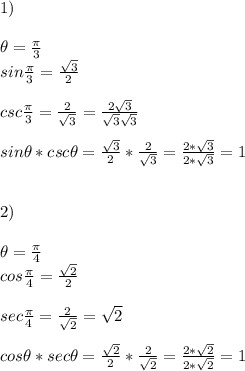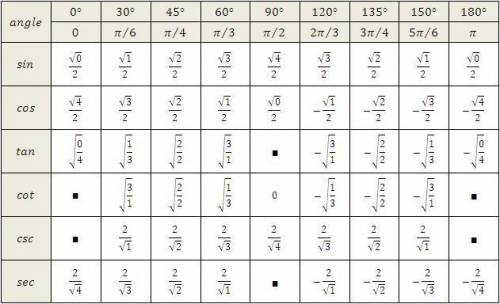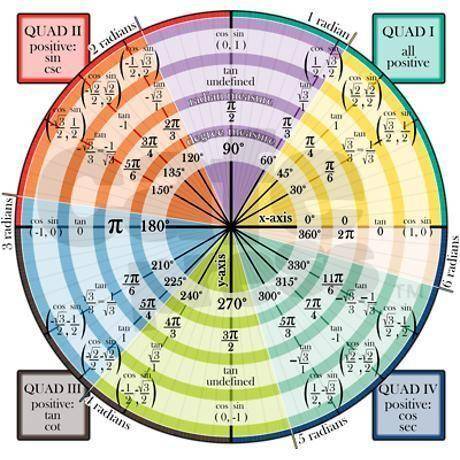
Mathematics, 12.03.2020 02:29 oroman4650
Does anyone know how to solve these two similar problems? I am very confused. Please provide a good description of how to solve this question.
1. Given that θ= π/3 , which of the following shows that sinθcscθ = 1?
A. (√2/2)(√2) = 1
B. (√3/2)(2√3/3) = 1
C. (1/2)(2) = 1
2. Given that θ = π/4, which of the following shows that cosθsecθ = 1?
A. (√2/2)(√2) = 1
B. (√3/2)(2√3/3) = 1
C. (1/2)(2) = 1

Answers: 2
Another question on Mathematics

Mathematics, 21.06.2019 17:00
The graph of f(x), shown below, resembles the graph of g(x) = x2, but it has been changed somewhat. which of the following could be the equation of f(x)?
Answers: 2

Mathematics, 21.06.2019 19:00
What is the best way to answer questions with a x expression in the question. for example 3x + 10x=?
Answers: 1

Mathematics, 21.06.2019 19:00
How many real-number solutions does the equation have? -4x^2 + 10x + 6 = 0 a. no solutions b. two solutions c. infinitely many solutions d. one solution
Answers: 2

Mathematics, 21.06.2019 19:20
The fraction of defective integrated circuits produced in a photolithography process is being studied. a random sample of 300 circuits is tested, revealing 17 defectives. (a) calculate a 95% two-sided confidence interval on the fraction of defective circuits produced by this particular tool. round the answers to 4 decimal places. less-than-or-equal-to p less-than-or-equal-to (b) calculate a 95% upper confidence bound on the fraction of defective circuits. round the answer to 4 decimal places. p less-than-or-equal-to
Answers: 3
You know the right answer?
Does anyone know how to solve these two similar problems? I am very confused. Please provide a good...
Questions


Geography, 19.07.2019 07:50




Mathematics, 19.07.2019 07:50


Mathematics, 19.07.2019 07:50



English, 19.07.2019 07:50

Mathematics, 19.07.2019 07:50


Social Studies, 19.07.2019 07:50


Mathematics, 19.07.2019 07:50

English, 19.07.2019 07:50

English, 19.07.2019 07:50

History, 19.07.2019 07:50

Mathematics, 19.07.2019 07:50






